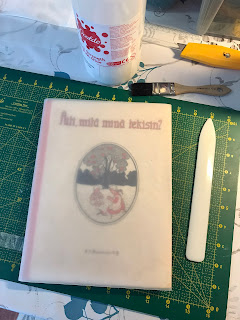What happens when you start looking at a non-profit organisation and the customer-facing services it provides, from the customers' point of view?
Well, firstly, you might end up knowing your customers and what drives them a bit better. You might even be able to choose a face for them. Or four.
You might start playing pretend with a stack of banana boxes and a little doll with a wooden pickup truck to simulate the real situation and to find a solution.
You might take the logo and run away with it. But first you think of the most obvious promotional product.
You could find yourself designing logo socks and knitting them up, to represent the main craft workshop run by the organisation.
You might start messing about with clay, and end up with chunky ceramic logo necklaces to represent the pottery.
Anothers might catch the same logoing bug, and you might end up having the same idea as the other to make upcycled bedsheet bags with silkscreened, swirling logos to be used in the pop-up shop.
Somebody else might look at the necklaces you made and fancies lightweight logo-shaped earrings. So you go down to the wood workshop and ask them to make a pair. While you are there you ask them to make a whole bunch more of the most obvious promotional product. It could get popular..!
And finally, you might decide to design a visual aid to explain to the unknowing or partially informed customer the whole complicated structure of the non-profit organisation and its different facets in a visual, easily absorbable format.
And this way, you might wind up having assembled a lovely little scene that greets the customer when they come here in their real pick-up truck. Thank you service design for the fresh point of view!
*










































